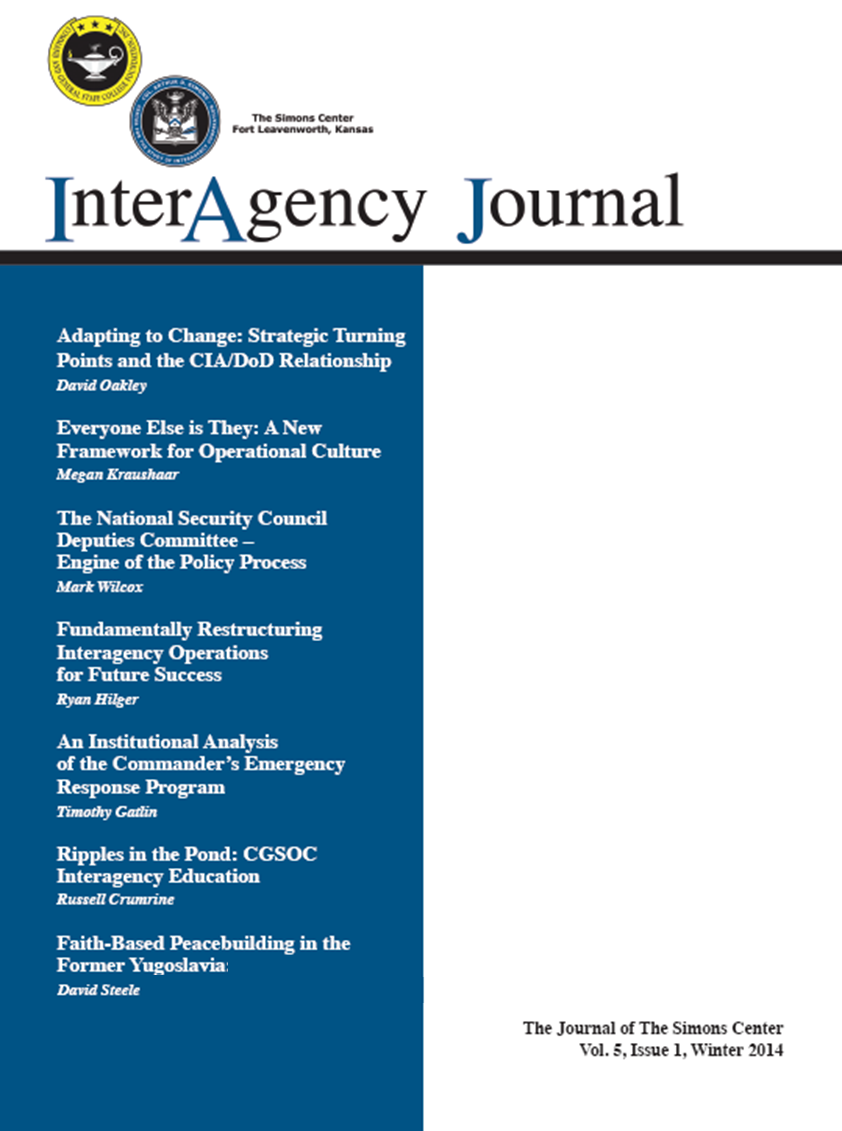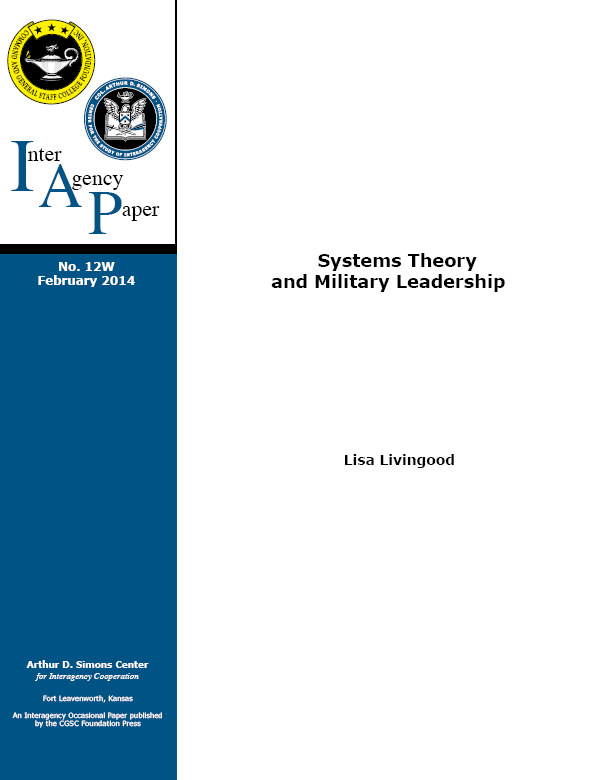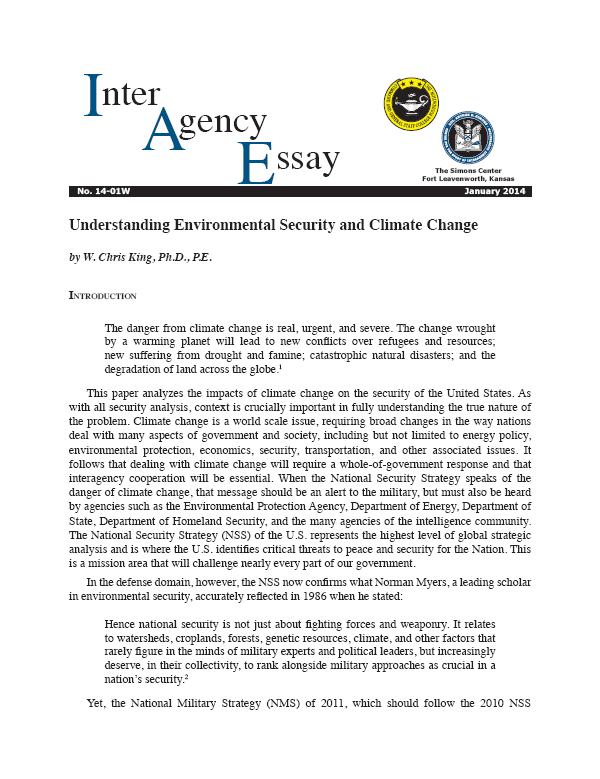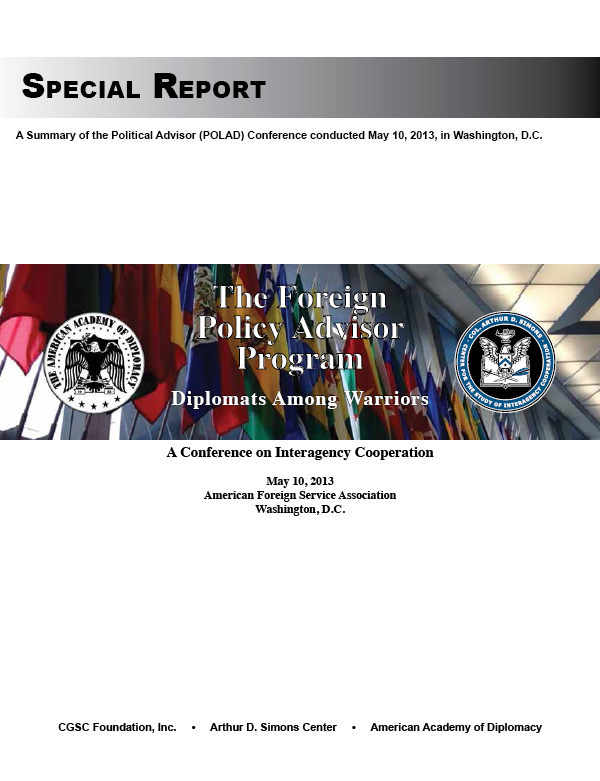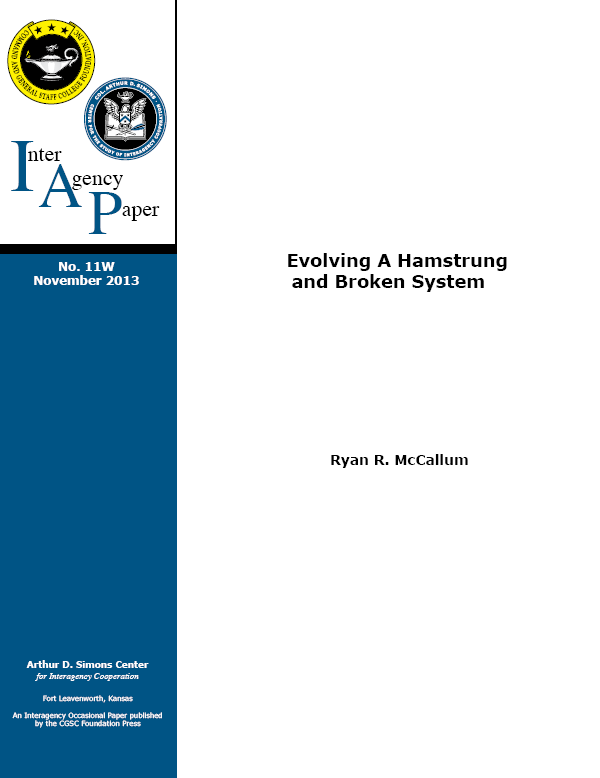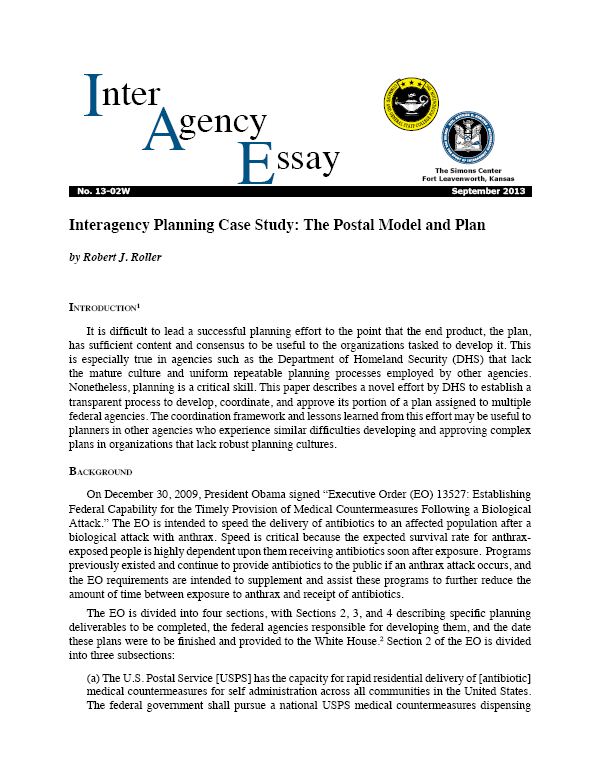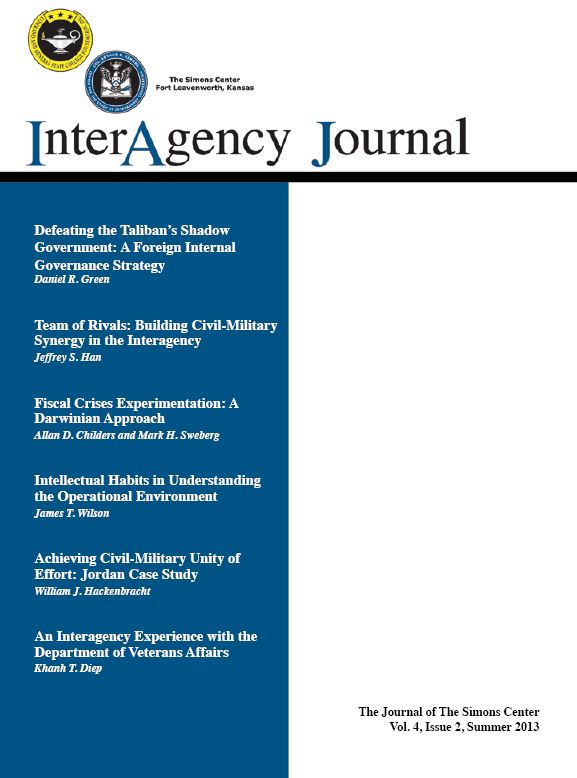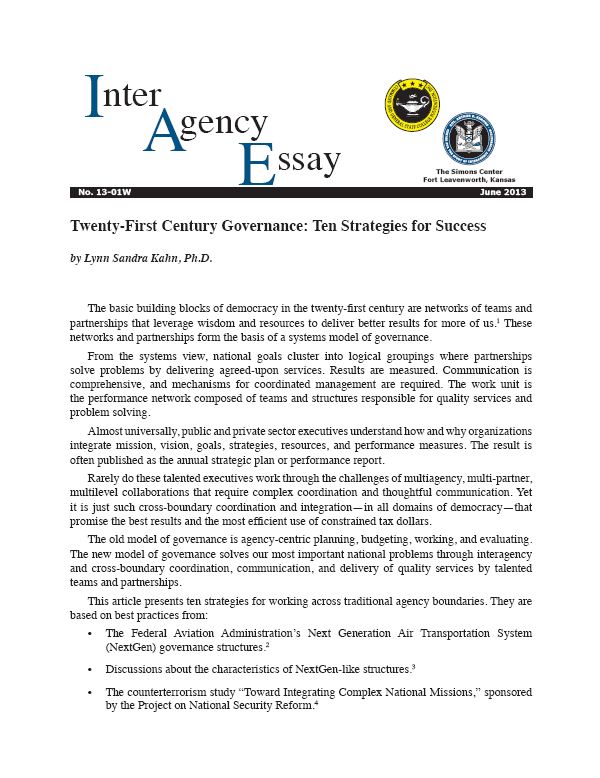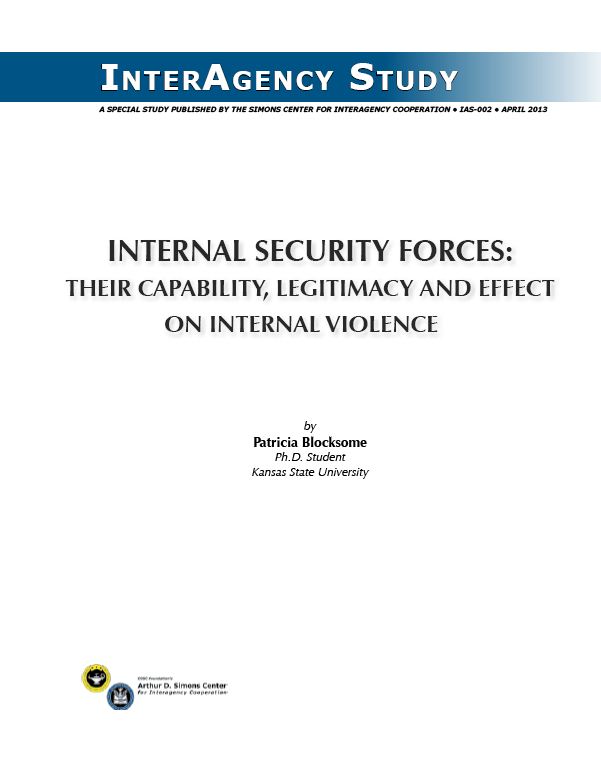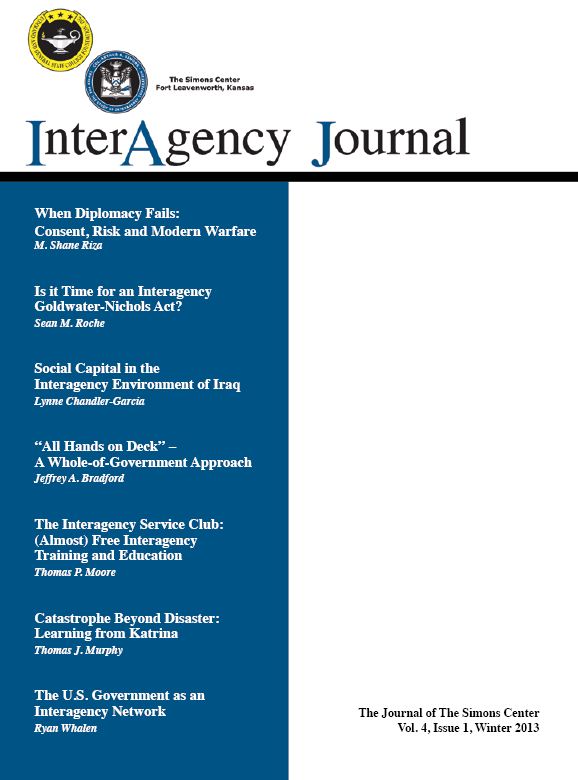Publications
The Simons Center Publications
The Simons Center is committed to the development of military leaders with interagency operational skills and an interagency body of knowledge that facilitates broader and more effective cooperation and policy implementation within the United States government. As part of this mission, the Simons Center produces a number of publications that cover a broad range of interagency topics including national security; leader development; ethics; counterterrorism; stabilization and reconstruction operations; homeland defense and security; and disaster preparation and response. The Simons Center’s main publications include the:
The InterAgency Journal (IAJ) is a peer-reviewed, national security studies journal, published semiannually. Journal articles are approximately 3,000 to 5,000 words in length.
The InterAgency Essay (IAE) series consists of individually published essays of 1,000 and 3,000 words in length that are not peer-reviewed.
The InterAgency Paper (IAP) series includes in-depth studies, individually published, of approximately 5,000 to 10,000 words in length. IAP submissions are peer-reviewed.
The InterAgency Studies (IAS) series consist if sponsored projects of the Simons Center on a particular issue and may include multiple articles or essays.
Other publications include special reports, web-exclusive publications and books. See the Simons Center Publication Descriptions for further information on each of our publication types.
Individuals wishing to receive hard copies of Simons Center’s InterAgency Journal should contact editor@thesimonscenter.org. To receive updates about the release of new Simons Center publications, Simons Center news and events, and other interagency news and events via email, please sign up for email alerts – an email alert sign up is available on most every page of the Simons Center website.
The Simons Center is always looking for authors to contribute manuscripts reflecting their experience, study, and insight. Please go to our Contribute Content page for complete submission instructions.
Disclaimer: The works published by the Simons Center represent the opinions of the authors and do not reflect the official views of any United States government agency, the Department of Defense, the Department of the Army, the U.S. Army Command and General Staff College, the Command and General Staff College Foundation, the Simons Center, or any other non-government, private, public, or international organization.
Inside this issue: Adapting to Change: Strategic Turning Points and the CIA/DoD Relationship, by David Oakley; Everyone Else is They: A New Framework for Operational Culture, by Megan Kraushaar; The National Security Council Deputies Committee – Engine of the Policy Process, by Mark Wilcox …and much more.
... Read MoreThe author analyzes the methods of Lieutenant General David M. Rodriguez, Commander of International Security and Assistance Force Joint Command, to articulate his understanding and interventions in Afghanistan.
... Read MoreThis essay analyzes the impacts of climate change on the security of the United States, and helps military, defense, and other national security professionals understand environmental security issues by explaining how environmental issues become national security issues…
... Read MoreThe Simons Center recently published a special report that focuses on the role of the State Department Foreign Policy Advisor. The report follows a May 2013 conference sponsored by the Simons Center and the American Academy of Diplomacy…
... Read MoreThe author of this paper argues there is a need for an evolution in interagency training and education to efficiently and effectively enable collaborative teams to achieve strategic objectives in complex humanitarian assistance/disaster response (HA/DR) operations overseas…
... Read MoreThis essay describes the process undertaken by the Department of Homeland Security and other agencies when developing and coordinating their portion of a plan to speed the delivery of antibiotics after a biological attack with anthrax…
... Read MoreInside this issue: Defeating the Taliban’s Shadow Government: A Foreign Internal Governance Strategy, by Daniel R. Green; Team of Rivals: Building Civil-Military Synergy in the Interagency, by Jeffrey S. Han; Fiscal Crises Experimentation: A Darwinian Approach, by Allan D. Childers and Mark H. Sweberg …and much more.
... Read MoreThis essay presents ten strategies for working across traditional agency boundaries…
... Read MoreThis study examines the relationship between internal security forces and sub-state political violence. The author looks at how civil conflict is shaped by both the quantity and quality of ISFs, and the need for an interagency approach in building security capacity, including government, military, peacekeeping, and law enforcement training.
... Read MoreInside this issue: When Diplomacy Fails: Consent, Risk and Modern Warfare, by M. Shane Riza; Is it Time for an Interagency Goldwater-Nichols Act?, by Sean M. Roche; Social Capital in the Interagency Environment of Iraq, Lynne Chandler-Garcia …and much more.
... Read More"*" indicates required fields
